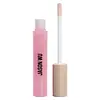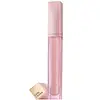What's inside
What's inside
 Key Ingredients
Key Ingredients

 Benefits
Benefits

 Concerns
Concerns

 Ingredients Side-by-side
Ingredients Side-by-side

Bis-Diglyceryl Polyacyladipate-2
EmollientPolyisobutene
Caprylic/Capric Triglyceride
MaskingPentaerythrityl Tetraisostearate
EmollientMethyl Methacrylate Crosspolymer
PEG-8 Beeswax
EmulsifyingSqualane
EmollientSilica
AbrasiveTribehenin
EmollientPhenoxyethanol
PreservativeParfum
MaskingSimmondsia Chinensis Seed Oil
EmollientTocopheryl Acetate
AntioxidantHelianthus Annuus Seed Oil
EmollientSalvia Hispanica Seed Oil
MoisturisingIsohexadecane
EmollientEthylene/Propylene/Styrene Copolymer
Tocopherol
AntioxidantButylene/Ethylene/Styrene Copolymer
Sodium Hyaluronate
HumectantXanthan Gum
EmulsifyingTripeptide-1
Skin ConditioningLinalool
PerfumingLimonene
PerfumingCI 77891
Cosmetic ColorantCI 77492
Cosmetic ColorantCI 77491
Cosmetic ColorantCI 77499
Cosmetic ColorantBis-Diglyceryl Polyacyladipate-2, Polyisobutene, Caprylic/Capric Triglyceride, Pentaerythrityl Tetraisostearate, Methyl Methacrylate Crosspolymer, PEG-8 Beeswax, Squalane, Silica, Tribehenin, Phenoxyethanol, Parfum, Simmondsia Chinensis Seed Oil, Tocopheryl Acetate, Helianthus Annuus Seed Oil, Salvia Hispanica Seed Oil, Isohexadecane, Ethylene/Propylene/Styrene Copolymer, Tocopherol, Butylene/Ethylene/Styrene Copolymer, Sodium Hyaluronate, Xanthan Gum, Tripeptide-1, Linalool, Limonene, CI 77891, CI 77492, CI 77491, CI 77499
Petrolatum
EmollientPentaerythrityl Tetraisostearate
EmollientBis-Diglyceryl Polyacyladipate-2
EmollientCaprylic/Capric Triglyceride
MaskingPEG-8 Beeswax
EmulsifyingMethyl Methacrylate Crosspolymer
Silica
AbrasiveMacrocystis Pyrifera Extract
Skin ConditioningTriticum Vulgare Bran Extract
Skin ConditioningTriticum Vulgare Germ Extract
Skin ConditioningHordeum Vulgare Extract
EmollientPalmitoyl Tripeptide-1
Skin ConditioningOlea Europaea Fruit Extract
BleachingPolybutene
Salicornia Herbacea Extract
Skin ConditioningOleic Acid
EmollientPhoenix Dactylifera Fruit Extract
EmollientSqualane
EmollientMoringa Oil/Hydrogenated Moringa Oil Esters
Skin ConditioningBrassica Campestris Sterols
EmollientCrithmum Maritimum Extract
Skin ConditioningCholesterol
EmollientOlea Europaea Fruit Oil
MaskingTetrahexyldecyl Ascorbate
AntioxidantSodium Hyaluronate
HumectantAcetyl Glucosamine
Skin ConditioningEthylhexyl Palmitate
EmollientRicinus Communis Seed Oil
MaskingGlyceryl Stearate
EmollientPolydecene
Skin ConditioningDimethicone
EmollientTocopheryl Acetate
AntioxidantHydrogenated Castor Oil
EmollientAcrylates Copolymer
Palmitic Acid
EmollientTribehenin
EmollientButylene Glycol
HumectantHydrogenated Vegetable Oil
EmollientSaccharin
MaskingSorbitan Isostearate
EmulsifyingSynthetic Fluorphlogopite
Potassium Sulfate
Vanillin
MaskingParfum
MaskingWater
Skin ConditioningAlumina
AbrasivePolyethylene Terephthalate
Tin Oxide
AbrasiveCalcium Sodium Borosilicate
Calcium Aluminum Borosilicate
Mica
Cosmetic ColorantCI 77491
Cosmetic ColorantCI 77492
Cosmetic ColorantCI 77499
Cosmetic ColorantCI 77891
Cosmetic ColorantCI 19140
Cosmetic ColorantCI 77400
Cosmetic ColorantCI 15850
Cosmetic ColorantCI 45410
Cosmetic ColorantCI 73360
Cosmetic ColorantCI 75470
Cosmetic ColorantCI 77163
Cosmetic ColorantCI 42090
Cosmetic ColorantCI 15985
Cosmetic ColorantCI 17200
Cosmetic ColorantCI 45370
Cosmetic ColorantCI 77742
Cosmetic ColorantCI 45380
Cosmetic ColorantPetrolatum, Pentaerythrityl Tetraisostearate, Bis-Diglyceryl Polyacyladipate-2, Caprylic/Capric Triglyceride, PEG-8 Beeswax, Methyl Methacrylate Crosspolymer, Silica, Macrocystis Pyrifera Extract, Triticum Vulgare Bran Extract, Triticum Vulgare Germ Extract, Hordeum Vulgare Extract, Palmitoyl Tripeptide-1, Olea Europaea Fruit Extract, Polybutene, Salicornia Herbacea Extract, Oleic Acid, Phoenix Dactylifera Fruit Extract, Squalane, Moringa Oil/Hydrogenated Moringa Oil Esters, Brassica Campestris Sterols, Crithmum Maritimum Extract, Cholesterol, Olea Europaea Fruit Oil, Tetrahexyldecyl Ascorbate, Sodium Hyaluronate, Acetyl Glucosamine, Ethylhexyl Palmitate, Ricinus Communis Seed Oil, Glyceryl Stearate, Polydecene, Dimethicone, Tocopheryl Acetate, Hydrogenated Castor Oil, Acrylates Copolymer, Palmitic Acid, Tribehenin, Butylene Glycol, Hydrogenated Vegetable Oil, Saccharin, Sorbitan Isostearate, Synthetic Fluorphlogopite, Potassium Sulfate, Vanillin, Parfum, Water, Alumina, Polyethylene Terephthalate, Tin Oxide, Calcium Sodium Borosilicate, Calcium Aluminum Borosilicate, Mica, CI 77491, CI 77492, CI 77499, CI 77891, CI 19140, CI 77400, CI 15850, CI 45410, CI 73360, CI 75470, CI 77163, CI 42090, CI 15985, CI 17200, CI 45370, CI 77742, CI 45380
Ingredients Explained
These ingredients are found in both products.
Ingredients higher up in an ingredient list are typically present in a larger amount.
This ingredient is lipid-based synthetic skin-conditioning agent derived from adipic acid and a mixture of fatty acids. It is often called a lanolin substitute.
As an emollient, it helps soften and hydrate the skin. Emollients create a barrier on the skin to trap moisture in.
Due to its fatty acid base, it may not be Malassezia folliculitis safe.
Learn more about Bis-Diglyceryl Polyacyladipate-2This ingredient is an emollient, solvent, and texture enhancer. It is considered a skin-softener by helping the skin prevent moisture loss.
It helps thicken a product's formula and makes it easier to spread by dissolving clumping compounds.
Caprylic Triglyceride is made by combining glycerin with coconut oil, forming a clear liquid.
While there is an assumption Caprylic Triglyceride can clog pores due to it being derived from coconut oil, there is no research supporting this.
Learn more about Caprylic/Capric TriglycerideCi 77491 is also hydrated iron III oxide. It's sole purpose is to give a red/pink hue to products.
Iron III oxides are classified as inorganic chemicals for coloring.
Synthetically created Ci 77491 is considered safer than those naturally found. This is because the synthetically created version may contain less impurities. Iron oxides are generally non-toxic and non-allergenic.
Learn more about CI 77491Ci 77492 is also hydrated iron III oxide. It's sole purpose is to give a yellow hue to products.
Iron III oxides are classified as inorganic chemicals for coloring.
Synthetically created Ci 77492 is considered safer than those naturally found. This is because the synthetically created version may contain less impurities. Iron oxides are generally non-toxic and non-allergenic.
Learn more about CI 77492Ci 77499 is also hydrated iron III oxide. It is created from mixing red and black iron oxides. This helps give shades of darkness to a product.
Iron III oxides are classified as inorganic chemicals for coloring.
Ci 77891 is a white pigment from Titanium dioxide. It is naturally found in minerals such as rutile and ilmenite.
It's main function is to add a white color to cosmetics. It can also be mixed with other colors to create different shades.
Ci 77891 is commonly found in sunscreens due to its ability to block UV rays.
Learn more about CI 77891This ingredient comes as a powder made up of small, porous, microbeads. It is used to add a silky feel to products and also helps absorb oil.
Parfum is a catch-all term for an ingredient or more that is used to give a scent to products.
Also called "fragrance", this ingredient can be a blend of hundreds of chemicals or plant oils. This means every product with "fragrance" or "parfum" in the ingredients list is a different mixture.
For instance, Habanolide is a proprietary trade name for a specific aroma chemical. When used as a fragrance ingredient in cosmetics, most aroma chemicals fall under the broad labeling category of “FRAGRANCE” or “PARFUM” according to EU and US regulations.
The term 'parfum' or 'fragrance' is not regulated in many countries. In many cases, it is up to the brand to define this term.
For instance, many brands choose to label themselves as "fragrance-free" because they are not using synthetic fragrances. However, their products may still contain ingredients such as essential oils that are considered a fragrance by INCI standards.
One example is Calendula flower extract. Calendula is an essential oil that still imparts a scent or 'fragrance'.
Depending on the blend, the ingredients in the mixture can cause allergies and sensitivities on the skin. Some ingredients that are known EU allergens include linalool and citronellol.
Parfum can also be used to mask or cover an unpleasant scent.
The bottom line is: not all fragrances/parfum/ingredients are created equally. If you are worried about fragrances, we recommend taking a closer look at an ingredient. And of course, we always recommend speaking with a professional.
Learn more about ParfumPEG-8 Beeswax isn't fungal acne safe.
Pentaerythrityl Tetraisostearate is derived from isostearic acid. It is an emollient and emulsifier.
The highest concentration of this ingredient is found in lipsticks.
This ingredient is minimally water soluble and may not be Malassezia folliculitis, or fungal-acne safe.
Learn more about Pentaerythrityl TetraisostearateSilica, also known as silicon dioxide, is a naturally occurring mineral. It is used as a fine, spherical, and porous powder in cosmetics.
Though it has exfoliant properties, the function of silica varies depending on the product.
The unique structure of silica enhances the spreadability and adds smoothness, making it a great texture enhancer.
It is also used as an active carrier, emulsifier, and mattifier due to its ability to absorb excess oil.
In some products, tiny microneedles called spicules are made from silica or hydrolyzed sponge. When you rub them in, they lightly polish away dead skin layers and enhance the penetration of active ingredients.
Learn more about SilicaSodium Hyaluronate is hyaluronic acid's salt form. It is commonly derived from the sodium salt of hyaluronic acid.
Like hyaluronic acid, it is great at holding water and acts as a humectant. This makes it a great skin hydrating ingredient.
Sodium Hyaluronate is naturally occurring in our bodies and is mostly found in eye fluid and joints.
These are some other common types of Hyaluronic Acid:
Learn more about Sodium HyaluronateSqualane is an emollient that helps the skin hold onto moisture. It's an oily liquid that occurs naturally in certain types of fish and plant oils.
Because squalane boosts hydration in the skin, it also comes with plenty of benefits: it is an antioxidant and can help fight free radicals and skin damage. Squalane is also found to have a detoxifying effect when applied.
Squalane comes from squalene, which occurs naturally within the sebum of our skin. It is one of the oils our skin produces to keep itself hydrated. Squalane is the hydrogenated version of squalene and has a longer shelf life.
Research shows that squalane is non-irritating (even at 100% concentration).
In general, it's a fantastic ingredient. It does a great job at hydrating the skin, and it's suitable for those with sensitive skin.
The source of squalane may impact malassezia / fungal acne. This is because olive oil derived squalane can contain impurities such as fatty acids and plant waxes. Sugarcane derived squalane is recommended for anyone with malassezia concerns.
Is squalane vegan?
This depends on the source. Squalane can be derived from both plants and animals. Most squalane used in skincare comes from plants.
Please note: the source of squalane is only known if disclosed by the brand. We recommend reaching out to the brand if you have any questions about their squalane.
Read more about squalene with an "e".
Is squalane an oil?
Squalane is often called an oil, but it’s technically not; it’s a hydrocarbon, meaning it’s only made of carbon and hydrogen, unlike true oils which are triglycerides made of fatty acids and glycerol.
The term “oil-free” isn’t regulated, so companies can define it however they want. Some exclude all oils, while others just avoid mineral oil or comedogenic oils.
While some people avoid oils thinking they cause breakouts, the right kind of oil (or oil-like ingredient like squalane) can actually help balance and hydrate your skin. It’s worth testing out simple oils or squalane to see what works best for your skin.
Learn more about SqualaneTocopheryl Acetate is AKA Vitamin E. It is an antioxidant and protects your skin from free radicals. Free radicals damage the skin by breaking down collagen.
One study found using Tocopheryl Acetate with Vitamin C decreased the number of sunburned cells.
Tocopheryl Acetate is commonly found in both skincare and dietary supplements.
Learn more about Tocopheryl AcetateTribehenin comes from glycerin and behenic acid.
It is used as an emollient, or moisturizer. Emollients form a thin barrier on skin to prevent moisture from escaping.
This ingredient may not be Malassezia folliculitis, or fungal-acne safe.
Learn more about Tribehenin